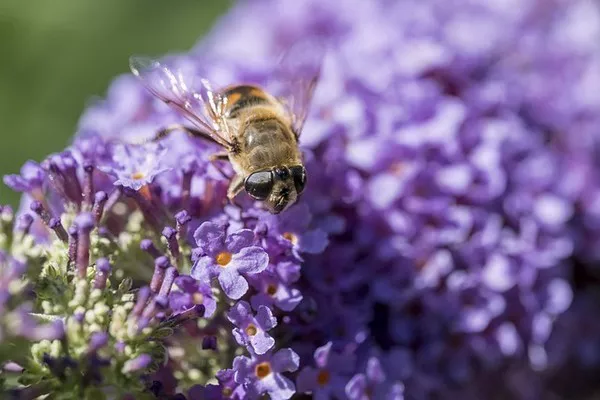Honey bees, indispensable pollinators vital to our ecosystem, are currently facing a concerning decline, raising alarms within the beekeeping and agricultural sectors. Researchers from the University of Kentucky Martin-Gatton College of Agriculture, Food, and Environment, led by Clare Rittschof, a researcher in the Department of Entomology, have conducted a groundbreaking study aimed at understanding and mitigating this decline. Their research, recently published in Agriculture, Ecosystems, and Environment, sheds light on the importance of winter annuals in sustaining honey bee colonies during the crucial late-winter and early-spring periods.
The hypothesis guiding the study focused on the often-overlooked winter annuals, considered as weeds in fallow crop fields. The researchers theorized that these plants could serve as an untapped resource, providing essential nutrition to honey bees when their demand for adequate nutrition peaks. To test this hypothesis, honeybee colonies were established near fields with varying levels of winter annuals abundance.
Contrary to their weed status, winter annuals proved to be a nutritional treasure trove for honey bees during their vulnerable late-winter and early-spring period. Clare Rittschof emphasized, “This time is vital for the health and growth of bee colonies.”
The methodology involved a meticulous examination of colony growth, health, and productivity, analyzing factors such as colony size, honey quantity, and immune-system strength. Simultaneously, the team conducted an in-depth field analysis of winter annuals to correlate plant abundance with colony growth.
The results were both enlightening and optimistic. Colonies positioned near fields abundant with winter annuals exhibited more robust growth and stronger immune responses than those near fields lacking these plants. Rittschof highlighted, “Winter annuals’ presence in fallow croplands significantly boosted honeybee colonies’ growth and immune response.”
The study revealed a nuanced aspect: the benefits varied across different types of croplands. Fallow croplands, previously used for cultivating crops like corn and soybeans, were identified as the most beneficial for honeybees due to a higher density of winter annuals, providing a richer and more diverse food source.
The implications extend beyond bee health and delve into sustainable agricultural practices. Farmers can play a pivotal role in supporting honeybee populations by allowing winter annuals to thrive in fallow fields during winter, contributing positively to soil health and erosion control.
The research suggests the potential for optimizing weed-control timing measures in croplands to benefit honeybee populations, aligning with more sustainable and environmentally conscious farming practices. While offering valuable insights, the study paves the way for further research into identifying the most beneficial winter annuals for bees and integrating their growth into modern farming practices. This exploration represents an exciting and crucial field of study that could reshape our agricultural landscape.


